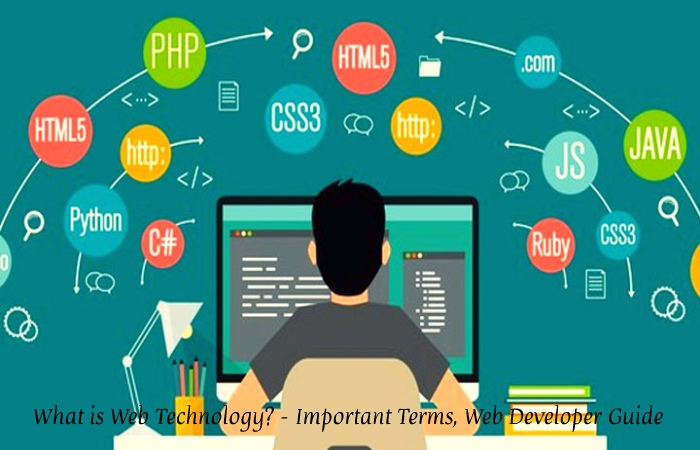What is Web Technology? – Web Technologies refer to the way computers/devices communicate with each other using mark-up languages. It invo It is communication across the web and creating, delivering, or managing web content using hypertext mark-up language (HTML).
Essentially, a website is a web document written in HTML (hypertext markup language). Additionally, It is said to have brought the world into a small village. Where people and devices can communicate with each other seamlessly.
Essentially, the WWW allow access to information that could not be found or would have been difficult to find without the www.
Table of Contents
Important Terms Of Web Technology
Web page, HTML, Web Server, Web Browser, URL, Protocol, Internet Protocol (IP) Address, HTTP, XML, Gateway, API .
Some Web Components:
Website – A website is a collection of web pages in group together and generally links each other in various ways. It is often referred to as a “website” or simply a “site.”
Web server: A specialized high-end computer that hosts a website on the Internet. Today we have cloud services that act as web servers.
Dynamic V/S Static Pages
Static pages: It display the same content each time as you view them.
Dynamic pages: They have a range that can change each time you access them.
Dynamic pages are typically in scripting languages such as PHP, Perl, ASP, or JSP. The scripts on the pages run functions on the server that return things like the date, time, and information from the database.
All information is in HTML code, so when the page reaches your browser, all the browser has to do is translate the HTML.
HTML
It is a language that creates static web pages.
HTML is the Language of Web Pages on the World Wide Web.
However, HTML uses commands with brackets called ‘HTML tags that are in a text document.
HTML code can be written in a text editor (like Notepad). Save the text editor file with the “.htm” or “.html” extension.
Open the file with any web browser(Like Internet Explorer, Firefox) to see the HTML page output
Web Technology For Developers
It is the open web that gifts incredible opportunities for developers. To get the most out of these technologies, you need to know how to use them. Below are relations to our web technology certification.
Guide For Web Developers
The Web Developer’s Guide provides valuable, hands-on content to help you use web technologies to do what you want or need to do.
List of tutorials to guide you step-by-step in learning APIs, technologies, or general areas.
Progressive Web Applications (PWAP)
Progressive web apps use web browser APIs and contextual functions in conjunction with traditional incremental improvement strategies to deliver an app-like native user experience in cross-platform web apps.
Web Technology References

1. Web API
Reference material for every individual APIs that make up the web’s powerful scripting capabilities, including the DOM and all associated APIs and interfaces that you can use to create web content and applications.
2. HTML
Hypertext mark-up language is the language cast-off to describe the content of a web page.
3. CSS
Cascading style sheets defines the arrival of web content.
4. MathML
A mathematical mark-up language exhibits compound mathematical equations and syntax.
5. Web Components
Web components are traditional elements that you can define and reuse in your applications.
Also Read: What is Machine Learning? Theory, Types Of Problems And Tasks
